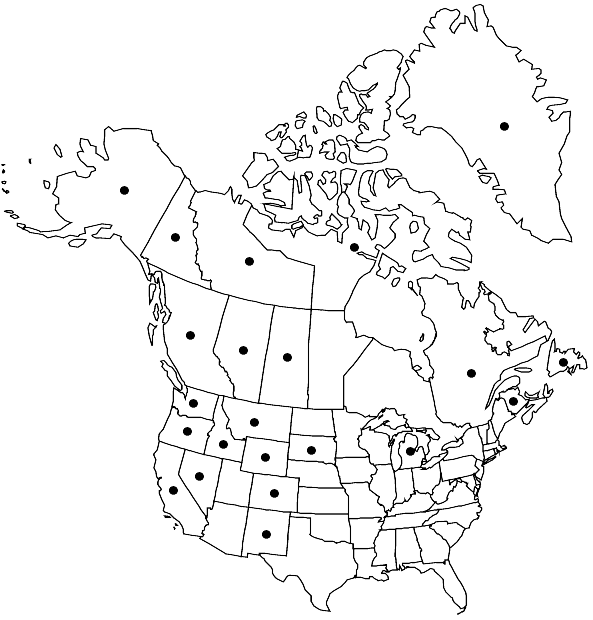Timmia austriaca
Sp. Musc. Frond., 176, plate 42, figs. 1–7. 1801,.
Plants without deciduous distal leaves. Leaf apex acute (but with terminal 4–5 cells often truncated); costa subpercurrent; sheath orange but appearing red when still on stem; limbs green, pellucid; limb-sheath transition abrupt, sharply angled; limb margins strongly dentate in distal 1/3–1/2, less dentate to entire proximally, occasionally crenulate or entire throughout; limb lamina cells 8–14 (–16) × 8–12 (–13) µm, with low conical or rounded mamillae on the adaxial surface, abaxial surface smooth; distal sheath lamina cells smooth or with 1–6 (–8) large round, often verrucose papillae over the abaxial surfaces of lumen; cells at leaf insertion not hyaline and fragile; abaxial surface of costa limb smooth, toothed or papillose near apex, adaxial cells with conical or rounded mamillae. Sexual condition dioicous; perichaetial leaves more strongly dentate than vegetative leaves, sheath up to half the leaf length. Calyptra without longitudinal split, not persistent on seta. Capsule spirally plicate (even when young and operculate); exothecial cell-walls sinuose; stomata mostly on the neck; endostome cilia without appendiculations on the interior surfaces.
Phenology: Sporophytes sporadic throughout the range.
Habitat: but more frequent in non-Arctic regions, various habitats including dry exposed ridges, wet river edges or forested valleys
Elevation: low to high elevations (0-3000 m)
Distribution

Greenland, Alta., B.C., N.B., Nfld. and Labr. (Nfld.), N.W.T., Nunavut, Que., Sask., Yukon, Alaska, Calif., Colo., Idaho, Mich., Mont., Nev., N.Mex., Oreg., S.Dak., Wash., Wyo., Eurasia (Alps), Eurasia (Greece), Eurasia (Italy), Eurasia (Pyrenees), Eurasia (Scandinavia), Eurasia (United Kingdom), Atlantic Islands (Iceland), e Asia (Russia)
Discussion
A polymorphic yet remarkably well-defined species, Timmia austriaca has the most well-delimited sheath of all Timmia taxa, with an abrupt change in color and sharp angle at the limb-sheath transition, and it is the only taxon where the costa widens slightly just at the limb-sheath transition. Its distinct habit and leaf angularity, dioicous sexuality, non-appendiculate endostome cilia, and orange sheaths separate it from T. megapolitana, while its habit, leaf angularity, and non-deciduous leaves will separate it from T. norvegica and T. sibirica. The perigonial leaves are short and broad, consisting mostly of sheath.
Selected References
None.
Lower Taxa
"broader" is not a number.